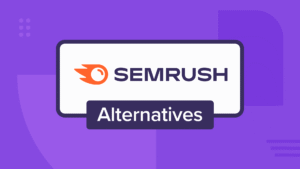Ben Stace Semantic SEO Case Studies: Advanced Strategies For Optimization
Traditional SEO marketing practices of the past such as keyword stuffing, irrelevant back linking, and others have undergone drastic transformations making it easier in some senses, and much more complicated in others. Modern semantic SEO, or optimizing for meaning, is the most critical focus of effective marketing. Very few people have showcased this better than Ben Stace. His work articulated in the Ben Stace Semantic SEO Case Studies demonstrate how businesses have the opportunity to dominate the market using advanced tactics derived from actual results.
These case studies focus on providing actionable instructons on how to tackle the long term problem of organic traffic.
What Are Ben Stace Semantic SEO Case Studies?
Ben Stace Semantic SEO Case Studies are the examples in which Ben implemented advanced semantic optimization tactics in real life to bolster search visibility. Every case study provides a step-by-step guide on
Grasping the search intent.
Content pruning to streamline providing answers for relevant queries.
Effective use of entities, synonyms, and topic clusters.
Crafting a robust internal linking strategy.
Given these case studies, SEO experts and content strategists are able to witness the workings of semantic SEO principals in real time.
The Core Principle: Search Intent First
Shifting from ‘keyword targeting’ to ‘intent targeting’ is perhaps the most noteworthy lesson learned from the Ben Stace Semantic SEO Case Studies.
Rather than just identifying and optimizing for a high-volume keyword Ben monetizes through:
Solving the searcher’s problem
Comprehensively covering the topic
Predicting the next relevant questions
The content is able to rank for the primary target as well as for dozens, and at times, hundreds of related long-tail searches.
Expert-Level Optimization Tip #1: Build Topic Clusters
A recurring observation from the Ben Stace Semantic SEO Case Studies is the single, standalone blog posts tend to struggle performing better than a part of a content hub.
How to do it:
Choose a primary ‘pillar’ topic (e.g. Semantic SEO).
Write multiple supporting articles that cover subtopics (e.g What Is Semantic SEO?, Semantic SEO Tools, Entity Optimization Techniques).
Strategically interlink the pages.
This helps Google perceive your website as an authoritative source for the topic.
Expert-Level Optimization Tip #2: Optimize for Entities, Not Just Keywords
Ben’s focus on entities, named concepts, people, places and brands, to from the perspective that search engines can recognize is something that sets him apart.
Example: Instead of the narrow phrase “SEO tips,” “SEO tips” would be expanded to include entities like “Google Knowledge Graph,” “Natural Language Processing,” and “Search Intent.”
As a result of the entity-driven techniques described in the Ben Stace Semantic SEO Case Studies, he achieved:
Competitive keyword ranking improvements
Topical authority enhancements
SERP click-through rate improvements
Expert Level Optimization Tip Sequence 3: Contextual Internal Linking
Ben Stace applies internal links for context in addition to navigation to help Google understanding a site’s internal structure and relationships between pages.
In his case studies, he methodically:
Creates links pointing to new pages from high-authority pages
Provides relevant anchor text (avoiding “click here”)
Associates relevant articles.
This technique reinforces a site’s architecture, which helps search engines crawl and comprehend the site’s content.
Expert Level Optimization Tip #4: Comprehensive Content Coverage
Ben’s case studies emphasize how thin content negatively impacts search rankings, demonstrating that the best performers are the most thorough.
How to implement this:
Address all possible related queries through your content.
Add relevant data, illustrative examples, and visuals.
Use headers (H2, H3) for better scan structure and scannability.
Google places high value on content that addresses the posed queries exhaustively rather than pages that only provide superficial responses.
Optimization Tip 5: Use Semantic Tools
Ben makes use of semantic SEO tools to:
Determine search terms that are related.
Evaluate content gaps in the competition.
Strategically organize keyword clusters.
In the Ben Stace Semantic SEO Case Studies, it was shown that by incorporating a few related terms, pages were able to rank for an additional 50-100 keywords, all without needing additional backlinks.
Real-World Results from the Case Studies
Let me share an example from one of Ben’s case studies:
Niche: Blog about marketing for software as a service.
Strategy: Use of topic clusters, entity optimization, and intent mapping.
Outcomes:
Organic traffic increased by 210% in six months.
Gained visibility for over 350 new keywords.
Obtained featured snippets for highly competitive queries.
Results like these and the others from Ben’s case studies demonstrate how semantic SEO is indeed an effective strategy.
How You Can Use This Semantic SEO in Your Work
For readers looking to benefit from Ben’s strategies, I suggest the following steps:
Conduct a semantic content audit for your site.
Create topic clusters and interlink them.
Expand the keyword list with the help of semantic analysis tools.
Focus on answering the user queries and cover the topics comprehensively.
Maintain an evergreen content strategy. Semantic SEO is a continuous endeavor.
Final Thoughts
The Ben Stace Semantic SEO Case Studies reveal an important fact: Google’s algorithm is increasingly coming closer to phonetics and pragmatics. Keyword stuffing is a relic of the past now it is all about meaning, context, and trust.
Ben’s tips not only ensure high ranking, he goes a step further and guarantees user satisfaction. As a blogger, marketer, or business owner, these guidelines will radically reshape your SEO tactics and help you get a leg up on the competition.
Share this content:















Post Comment